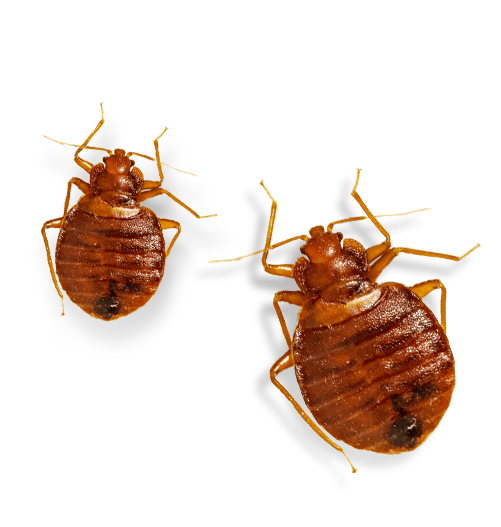The Science of Insect Control: Recognizing the Biology of Common House Vermin
In the world of parasite control, a profound understanding of the organic details of common household pests offers as the cornerstone of effective management strategies. By delving into the nuanced life cycles, behavior patterns, and recreation approaches of these unwelcome intruders, we uncover a wide range of expertise that can substantially influence our capacity to regulate their populations. From the precise behaviors of little pests to the facility mating rituals of bigger parasites, the understandings acquired from studying their biology supply an essential structure for creating targeted and lasting services. Join us as we unwind the scientific bases of insect control and discover the interesting world that exists within our homes (philly philadelphia bed bug exterminator).
Value of Bug Biology
The understanding of pest biology is vital for effective pest control strategies in residential settings. By diving right into the biology of common family pests, individuals can get valuable understandings right into their behavior, life cycles, and environments. This understanding is important for establishing targeted and lasting pest administration comes close to that minimize using unsafe chemicals and reduce environmental effect.
Pest biology incorporates various elements that affect bug infestations, including reproductive rates, liked food resources, and survival devices. Recognizing the breeding patterns of bugs such as insects or cockroaches can assist property owners implement preventative steps to disrupt their life cycles and decrease populations. Knowing the foraging habits of ants or rats can assist in finding and removing their gain access to factors to food sources within a home.

Life Cycles of Usual Insects
Understanding the life process of usual bugs is essential for implementing reliable bug control measures in residential settings. The life cycle of an insect describes the phases it experiences from birth to their adult years and consists of egg, larva, pupa, and adult stages. Understanding these stages helps in recognizing one of the most at risk factors in the insect's life process for targeted control techniques.
For circumstances, typical household pests like roaches have an incomplete metamorphosis, proceeding from egg to nymph to adult. Recognizing this cycle can assist in targeting egg-laying sites, disrupting recreation, and stopping the development of new grownups. In contrast, parasites like mosquitoes undertake a full metamorphosis with egg, larva, pupa, and grown-up stages. By concentrating on getting rid of reproducing websites such as standing water, it is possible to disrupt the life process and lower mosquito populaces efficiently.
Actions Patterns of House Insects
A comprehensive analysis of family pests exposes intricate habits patterns that play an essential function in recognizing bug control strategies. Home pests show numerous actions patterns that add to their survival and capability to grow in human habitats. Comprehending these patterns is essential for efficient bug monitoring.
One common behavior amongst family pests is their attraction to food sources. Pests such as ants, cockroaches, and kitchen parasites are attracted to food spills, residues, and crumbs. By identifying and getting rid of these food resources, property owners can interrupt the bugs' foraging patterns and minimize problems.

Furthermore, many home bugs show social behavior, residing in groups or colonies. Comprehending the social dynamics of pests like termites or ants is vital for properly eradicating entire nests as opposed to simply specific pests. By comprehending the habits patterns of family bugs, bug control specialists can establish targeted and reliable strategies to manage infestations effectively.
Reproduction Techniques in Bugs
Recreation in bugs includes complex organic devices that drive populace development and invasion rates. Pests have developed various methods to make sure the continuation of their types and the successful colonization of brand-new settings. One usual strategy is quick recreation, where bugs have short gestation periods and create lots of children. This technique permits them to quickly establish thriving populations in desirable conditions. In addition, some pests show intricate mating actions, such as scent communication and courtship rituals, to guarantee successful reproduction.
Another essential facet of insect reproduction is the growth of resistance to control measures. Bugs can adjust to pesticides and various other eradication methods through systems like hereditary mutations and behavioral changes. This ability to progress swiftly presents a significant challenge for insect control efforts, calling for continuous technology in monitoring strategies.

Influence of Biology on Parasite Control
The biological attributes of pests play an important duty fit the effectiveness of insect control approaches. Understanding the biology of typical house insects is essential for establishing effective parasite management methods (philly pest control philadelphia bed bugs). Aspects such as the life-span of a parasite, its reproductive rate, preferred habitats, and feeding habits all influence the choice of investigate this site control procedures
As an example, pests with rapid reproductive prices, such as roaches or specific varieties of ants, might call for a lot more aggressive and sustained control initiatives to stop population spikes. Similarly, pests that have actually created resistance try this to specific chemicals will necessitate the usage of alternate control methods to efficiently manage problems.
Furthermore, the biology of pests likewise influences the timing and frequency of control applications. Some bugs are extra energetic throughout particular times of the year or under particular environmental conditions, calling for targeted interventions throughout these periods to accomplish optimal results.
Final Thought
To conclude, recognizing the biology of common house insects is important in reliable insect control. By recognizing their life cycles, habits patterns, and reproduction strategies, we can create targeted and effective approaches to manage and remove these insects. By considering the biological aspects of bugs, we can implement more lasting and sustainable services that lessen the impact of insects on our homes and settings.
In the world of parasite control, an extensive understanding of the biological ins and outs of usual household insects serves as the foundation of reliable management techniques.The understanding of bug biology is critical for effective parasite control techniques in property setups.Recognizing the life cycles of common pests is essential for carrying out reliable parasite control actions in residential environments.The organic characteristics of pests play an important function in shaping the efficiency of insect control methods.In conclusion, understanding the biology of common household pests is essential in reliable bug control.